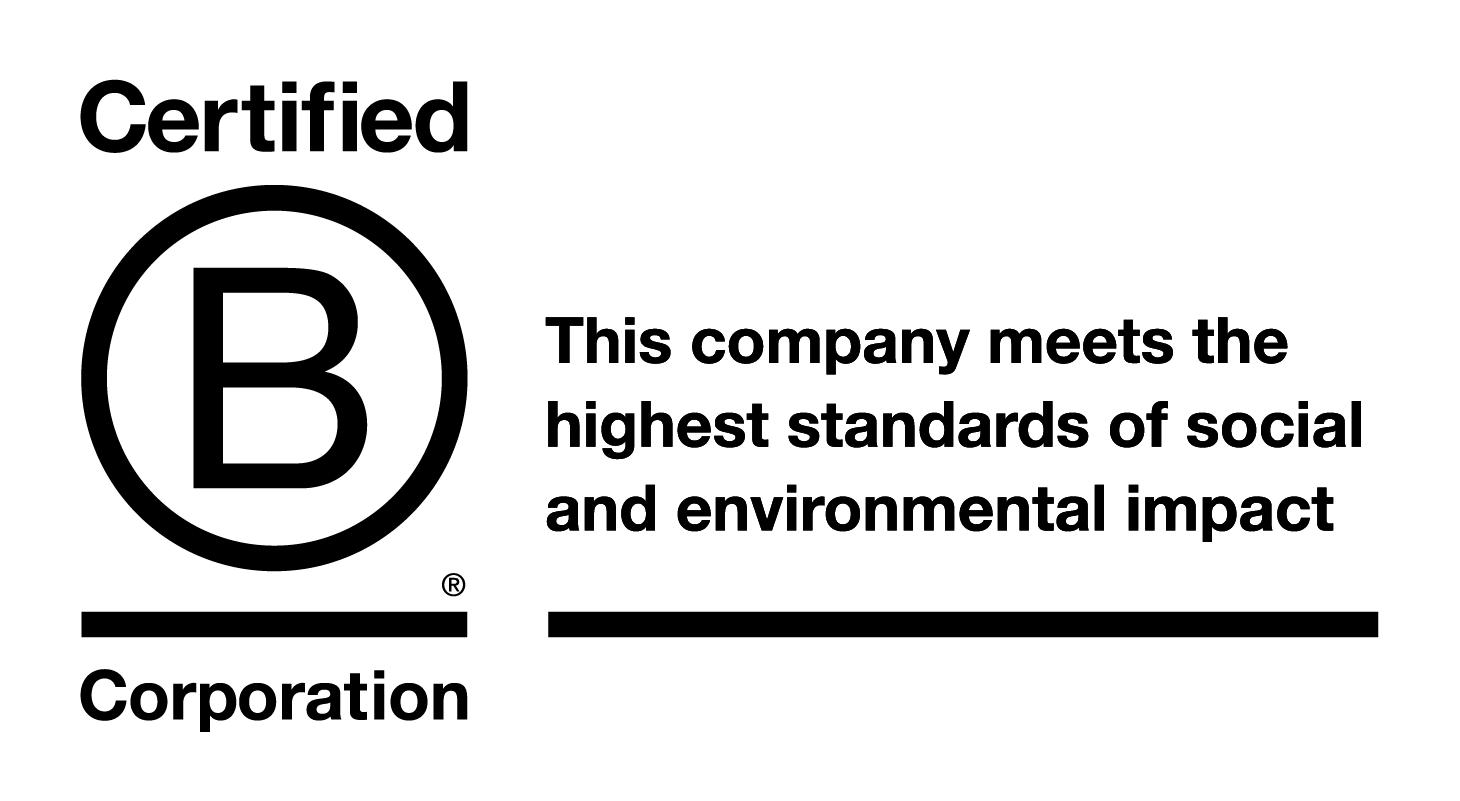Sign up. Be inspired. Get clicking.
Slow travel benefits for reducing climate impact
28 April 2025
Traditional tourism often centres on quickly ticking off destinations, but this fast-paced approach can lead to higher carbon emissions and less meaningful experiences. Shifting towards deeper exploration offers a more rewarding alternative.
Aviation accounts for around 2% of global carbon emissions, with passenger flights responsible for approximately 81% of that total. Opting for local travel or choosing longer stays can significantly reduce one’s impact. Recent trends show a growing number of travellers favouring domestic trips, motivated by both economic and environmental considerations.
This approach values genuine connection over mere checklists. It encourages cultural immersion, helping to lower stress and costs along the way. The result is a lighter impact and richer, more lasting memories.
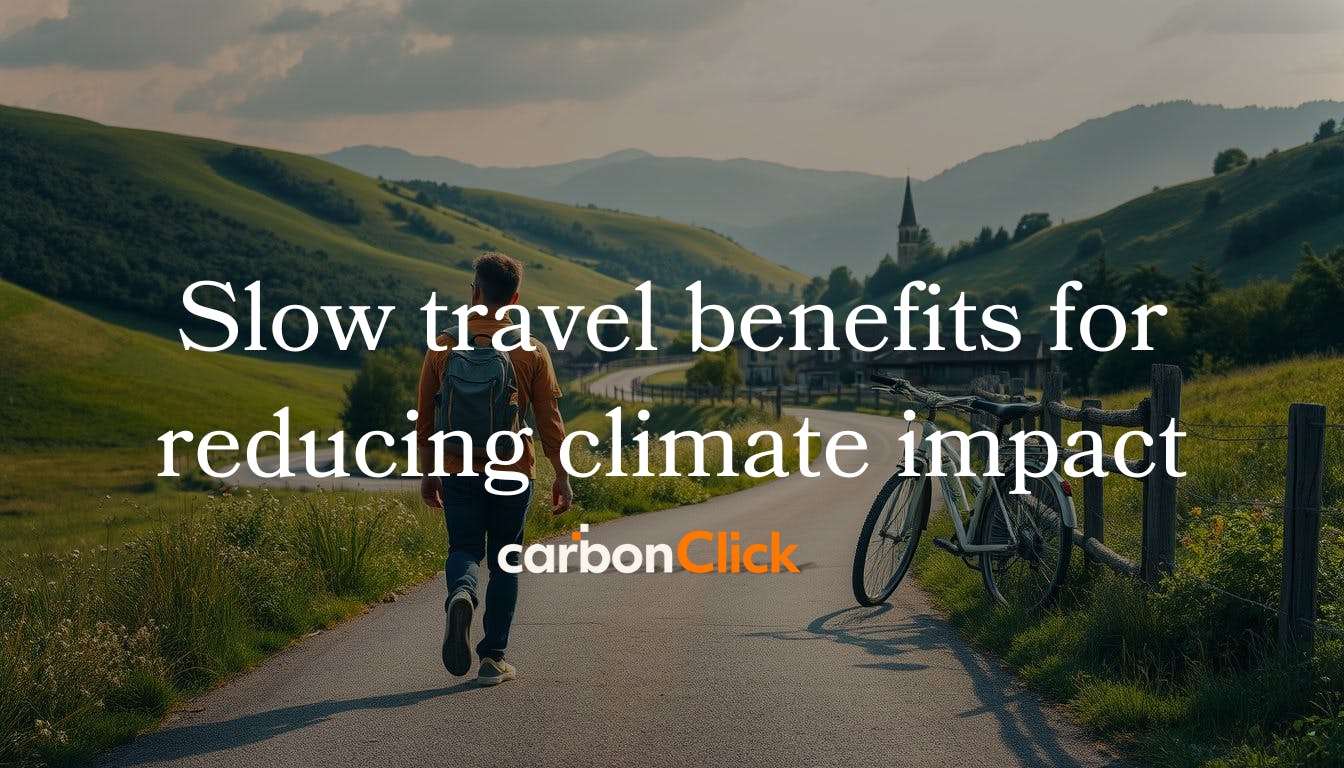
What Is slow travel?
A movement that began in Italy has reshaped how people approach their holidays. It started in 1986, when Carlo Petrini launched the Slow Food movement as a response to the rise of fast-food culture. By the late 1990s, this philosophy had expanded beyond gastronomy into tourism.
The core idea is simple: prioritise quality over speed. Rather than rushing between cities, travellers immerse themselves in one place, reducing the carbon emissions associated with frequent transport.
Origins: Petrini’s protest against fast food sparked a global shift towards more mindful consumption.
Evolution: After 2000, travellers began adopting similar principles, favouring longer stays and richer local interactions.
Digital influence: Platforms such as Airbnb made extended stays more accessible, fuelling the rise of digital nomadism.
Recent trends: The COVID-19 pandemic accelerated interest in domestic travel, combining safety with greater consideration for sustainability.
Unlike "deep travel," which centres on cultural engagement, slow travel emphasises pace. It’s about savouring each experience, whether sipping coffee in a neighbourhood café or cycling through rural landscapes.
This approach is not just about lowering environmental impact — it also builds stronger, lasting connections. By staying longer, travellers support local economies and tread more lightly.
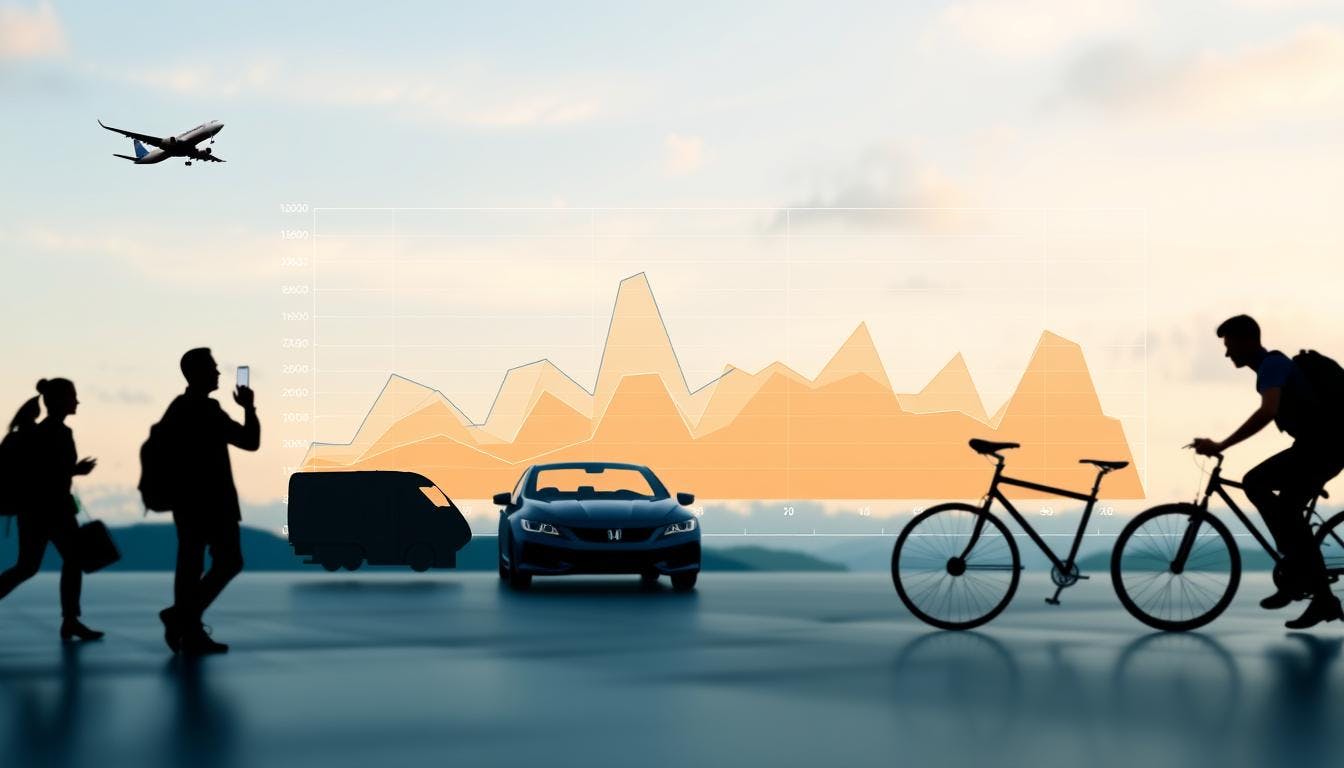
Why slow travel matters for the environment
Transport choices have a direct impact on global emissions, with planes ranking among the worst offenders. A single flight can produce as much carbon as 100 cars, making short trips particularly damaging. Ground transport options, such as trains or buses, can cut emissions by up to 90% per passenger-mile.
Accommodation also plays a significant role. Hostels typically generate 75% less carbon dioxide than hotels by using shared spaces and local resources. Smaller lodgings often source food nearby, further reducing emissions linked to transport.
- Short flights: Emit up to 25 times more CO₂ per mile than trains.
- Cruises: A single ship can produce pollution equivalent to one million cars each day.
- Overtourism: In Santorini, waste production doubled within five years; in the Lake District, popular trails have been severely eroded by overcrowding.
Choosing local businesses over multinational chains helps keep money within the community. Family-run cafés and shops reinvest around 70% of their revenue locally, compared to far less by global brands. This shift supports sustainable economic growth.
The tourism industry must navigate rising demand while respecting ecological limits. By prioritising lower-impact transport and accommodation, we can help safeguard treasured destinations for future generations.
Slow travel benefits for reducing climate impact
Extending your stay in one location can significantly reduce carbon emissions compared to taking frequent short trips. Fewer flights mean less fuel consumed, and choosing direct routes helps minimise the energy-intensive takeoff and landing cycles.
Flying economy also results in much lower per-person emissions than travelling in business class, with economy seats producing around three times less carbon. Packing light further improves fuel efficiency — every additional 10 pounds of luggage can increase an aircraft’s emissions by up to 1%.
- Trains vs. planes: A journey from New York City to Chicago emits approximately 0.1kg of CO₂ per passenger-mile by train, compared to 0.3kg by plane.
- RVs: Road trips using recreational vehicles can save between 47% and 60% in both costs and emissions compared to combining flights with hotel stays.
- Cruises: Cruise ships average around 0.43kg of CO₂ emissions per mile — roughly ten times more than trains.
Spending longer in one place also strengthens local economies. Independent vacation rentals typically reinvest about 70% of their revenue within the community, unlike multinational hotel chains. This approach eases pressure on local infrastructure while fostering sustainable growth.
Sustainable travel is not simply about distance — it’s about choosing smarter transport options and building deeper, more meaningful connections, rather than racing through rushed itineraries.
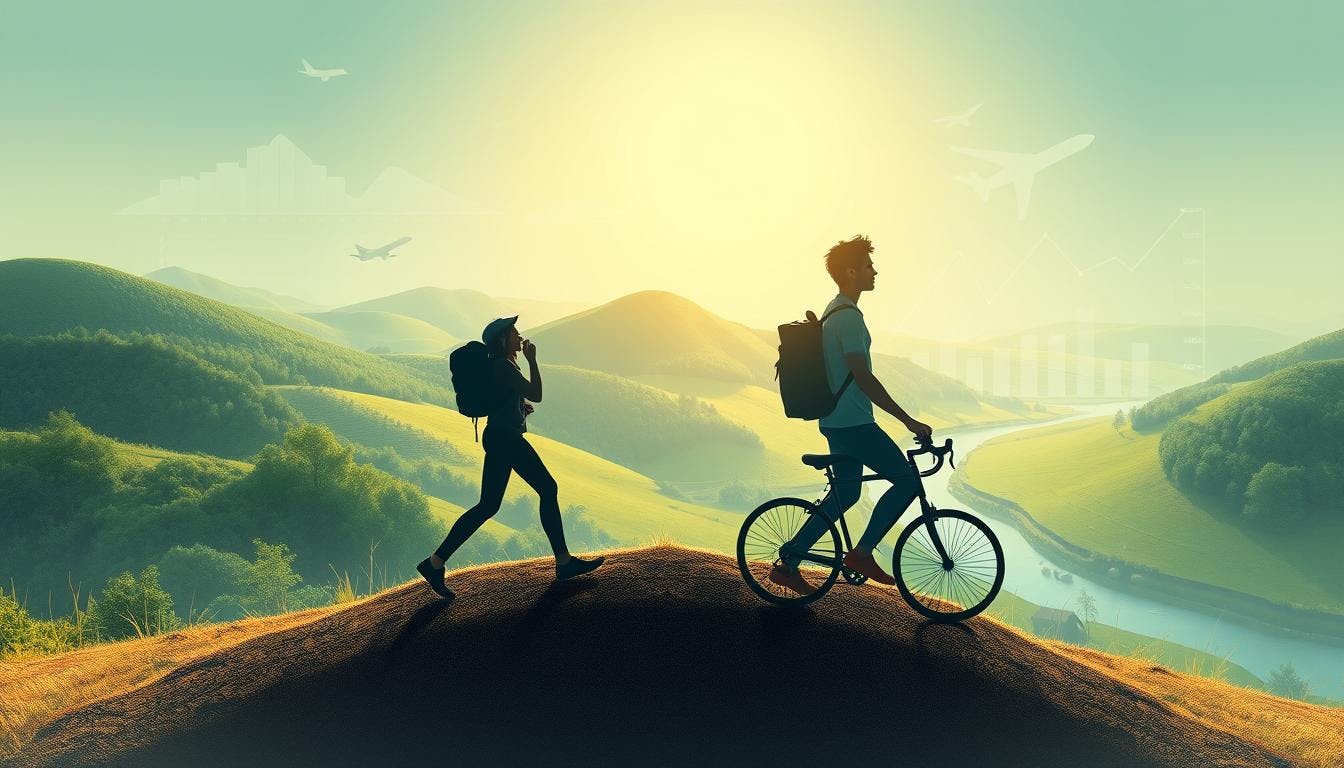
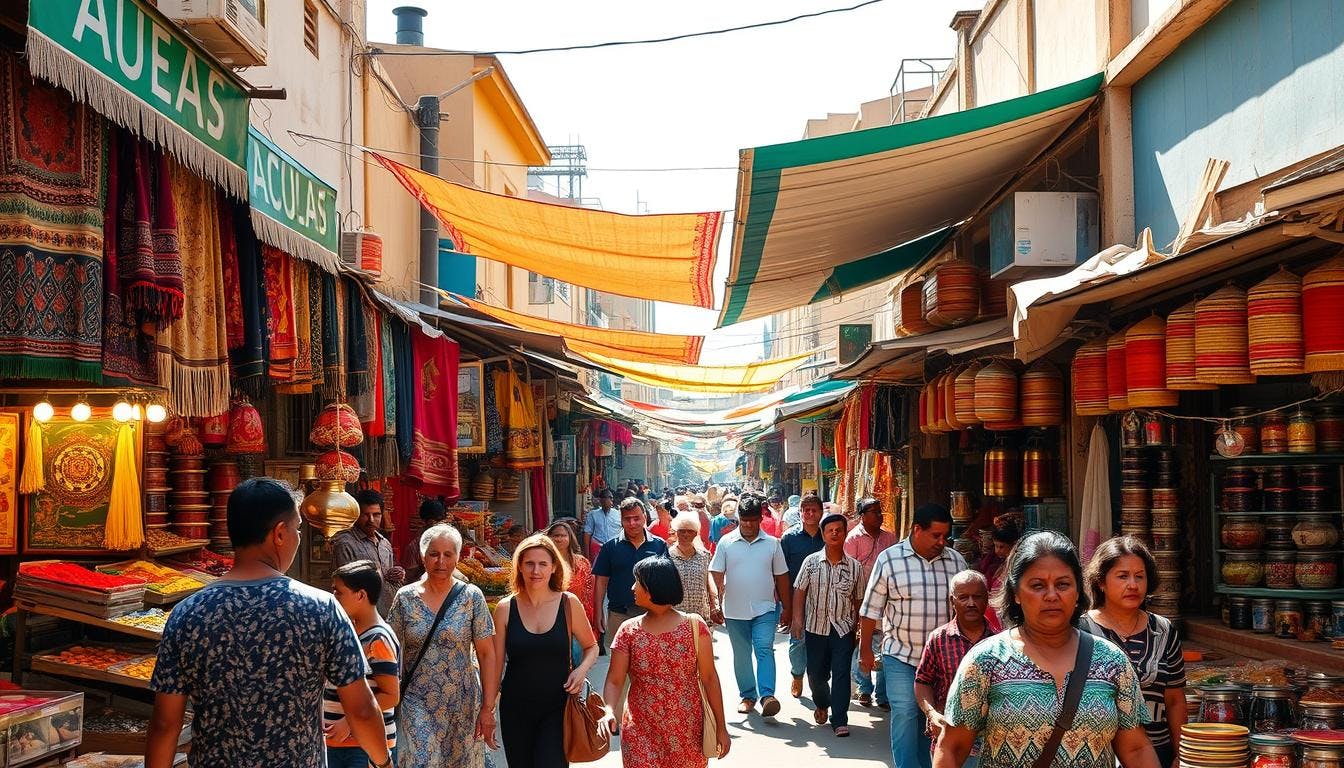
How slow travel enhances your experience
Many travellers return home feeling exhausted rather than refreshed. Traditional tourism often focuses on quantity rather than quality, leaving little space for immersive experiences. Slowing down, however, fosters deeper connections with people and places.
Cultural immersion thrives during extended stays. Homestays and local festivals offer authentic insights into daily life. For example, spending a month in Portugal’s vineyards provides a more profound understanding of winemaking traditions than a rushed five-country Eurotour ever could.
- Reduced stress: Fewer itinerary changes can lower cortisol levels by as much as 30% (RecNation).
- Language skills: Extended interactions with locals accelerate fluency far more effectively than classroom learning.
- Natural rhythms: RV travel allows sleep patterns to align with the daylight cycles of each destination.
Instead of overcrowded tourist attractions, local cafés, markets, and workshops provide opportunities for richer interactions. These quality exchanges reveal the true essence of a culture. The result? Deeper memories and a lighter footprint.
How to practice slow travel
Practical strategies can make sustainable travel accessible without sacrificing experiences. Start by staying at least seven days in one location. Longer stays help reduce emissions from frequent travel and foster deeper cultural connections.
Pack light to optimise multimodal journeys. Every extra pound increases fuel consumption on both flights and trains, so use compact, versatile gear like convertible backpacks.
Rail travel significantly reduces carbon footprints. Resources such as Seat61.com offer comprehensive global train schedules. For example, Byway Travel designs flight-free itineraries across Europe, allowing travellers to explore with minimal impact.
- Work-exchange platforms: Workaway and WWOOF connect travellers with locals for extended stays in exchange for help with sustainable projects or farming.
- Cycling routes: Sustrans.org maps over 12,000 cycling paths across the UK, providing low-impact options for exploration.
- Flight offsets: When air travel is unavoidable, invest in verified carbon-offset programs to reduce your footprint.
Prioritise activities that benefit local economies. Visit family-run cafés, attend workshops, or volunteer. These choices create lasting impacts, moving beyond the typical tourist experience.
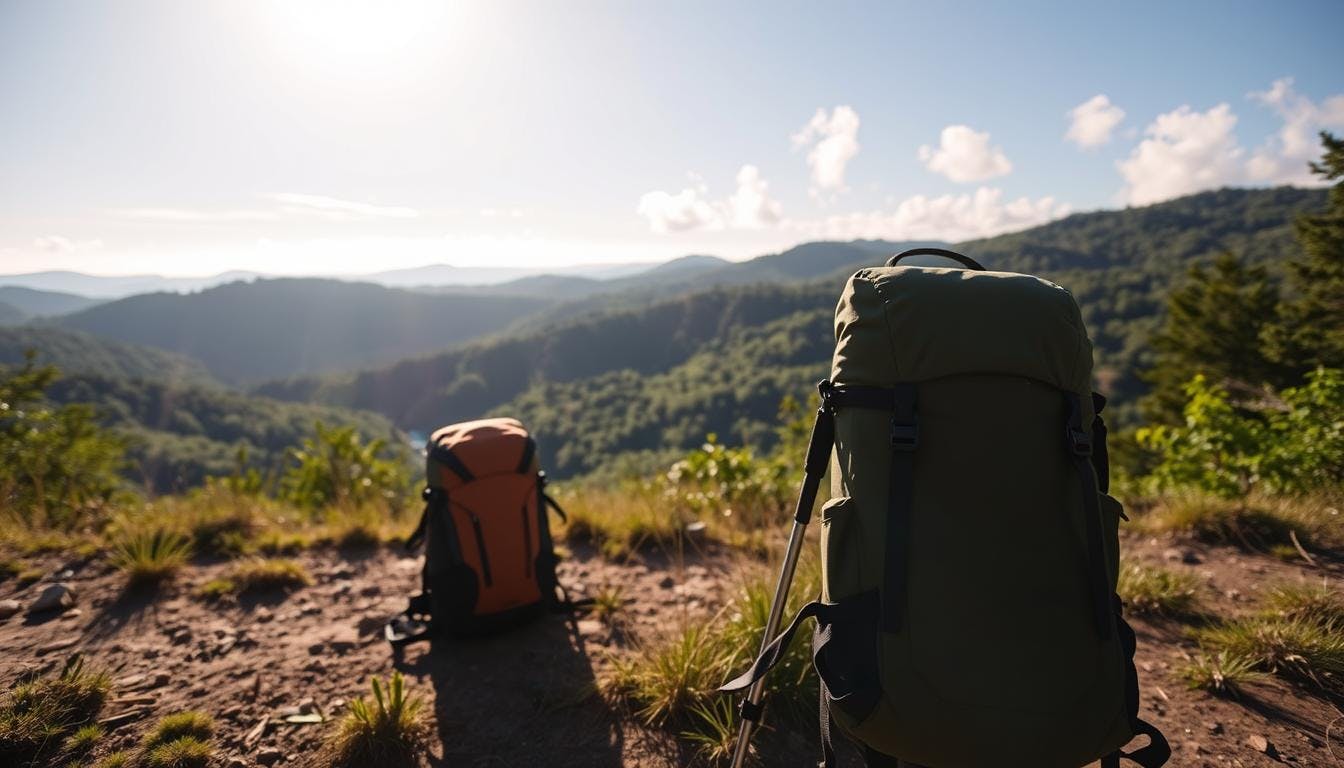
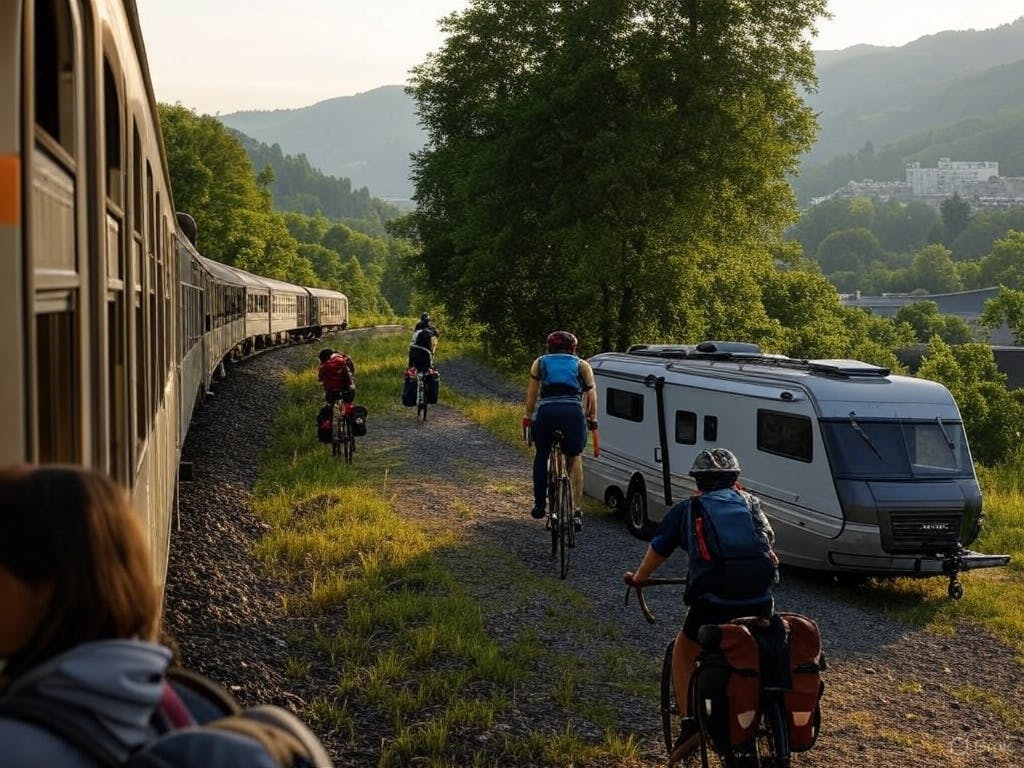
Sustainable transportation options for slow travel
Conscious travellers have a variety of low-emission transport options. Each choice affects carbon footprints in different ways, with trains, buses, and bikes often outperforming planes in terms of sustainability.
Planes emit 0.25kg of CO₂ per mile, while trains release just 0.04kg. Buses are somewhere in between at 0.08kg. For US travellers, Amtrak’s routes emit only 0.104kg per passenger-mile.
Scenic rail journeys offer both low emissions and breathtaking views. Some of the key US routes include:
- California Zephyr: A journey through the Rockies and Sierra Nevada.
- Empire builder: A northern route from Chicago to Seattle.
- Coast starlight: A Pacific Ocean route from LA to Seattle.
Bicycle touring is a zero-emission way to travel. Essential gear includes:
- Lightweight panniers for storage.
- Durable tyres for a variety of terrain.
- Solar-powered GPS units for navigation.
Electric RVs combine comfort with sustainability. New models feature:
- Ranges of up to 300 miles on a single charge.
- Solar panels for additional power.
- Compact designs that make urban parking easier.
Travelling on public transport abroad? Use apps like Citymapper or Google Maps to navigate local systems. Learning basic phrases, such as “ticket” or “next stop,” in the local language can also enhance your experience.
Planning a slow travel itinerary
Strategic planning maximises both environmental benefits and cultural immersion. A well-organised itinerary helps avoid last-minute transport scrambles, reducing emissions. For example, the Lake District saw a 40% reduction in footpath erosion after implementing off-season visitation policies.
For transcontinental rail journeys, start planning six months in advance. Early booking ensures discounts and seat availability. Use tools like Rome2Rio to compare routes and their associated emissions.
Shoulder seasons (spring and autumn) provide ideal conditions for travel to over 50 global destinations. Examples include:
- Japan’s cherry blossoms in April, avoiding the summer crowds.
- Mediterranean coasts in September, with warm weather and fewer tourists.
- New England’s October foliage, offering peak colours without the congestion.
Structure your trip between planned activities and spontaneous exploration with the following approach:
- 30% of your time for landmarks (e.g., museums, historic sites).
- 50% for local experiences (markets, workshops).
- 20% left flexible for unexpected discoveries.
Google Earth can help you analyse terrain for biking or hiking routes. For a 30-day Pacific Coast Highway RV trip:
- Rent an electric RV with a 300-mile range.
- Book campgrounds with solar-powered hookups.
- Plan stops near farm stands to support local growers.
- Organise day trips from a central base to reduce the need for packing.
Roadtrippers is a useful tool for mapping scenic detours and identifying low-impact pit stops.
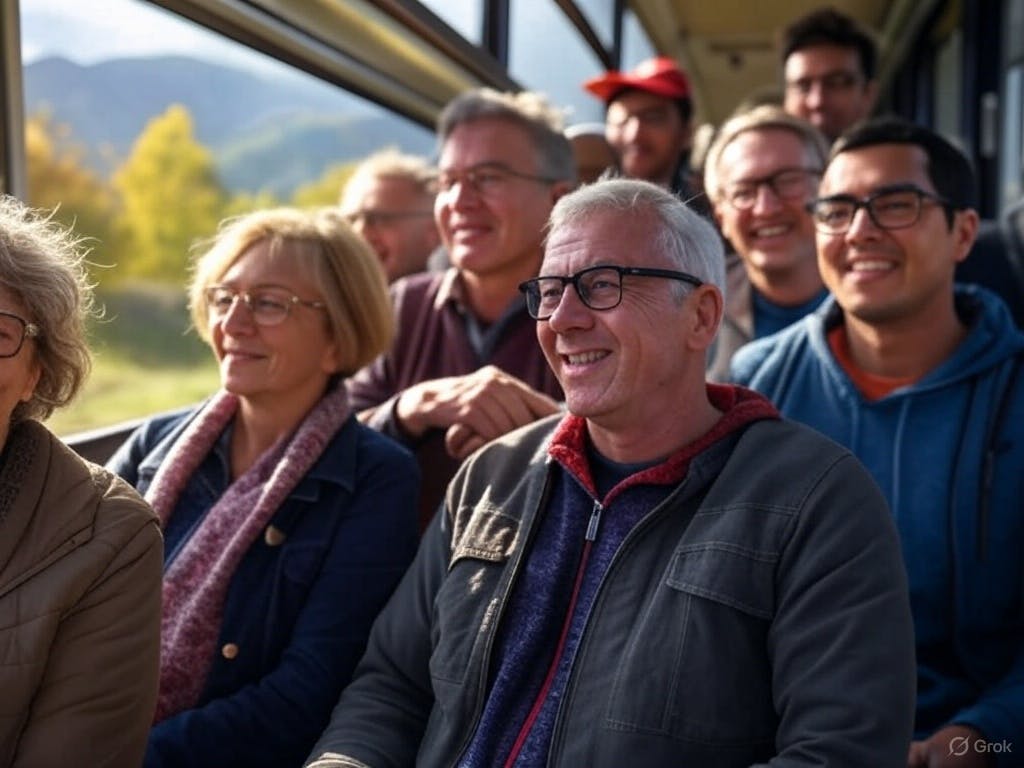
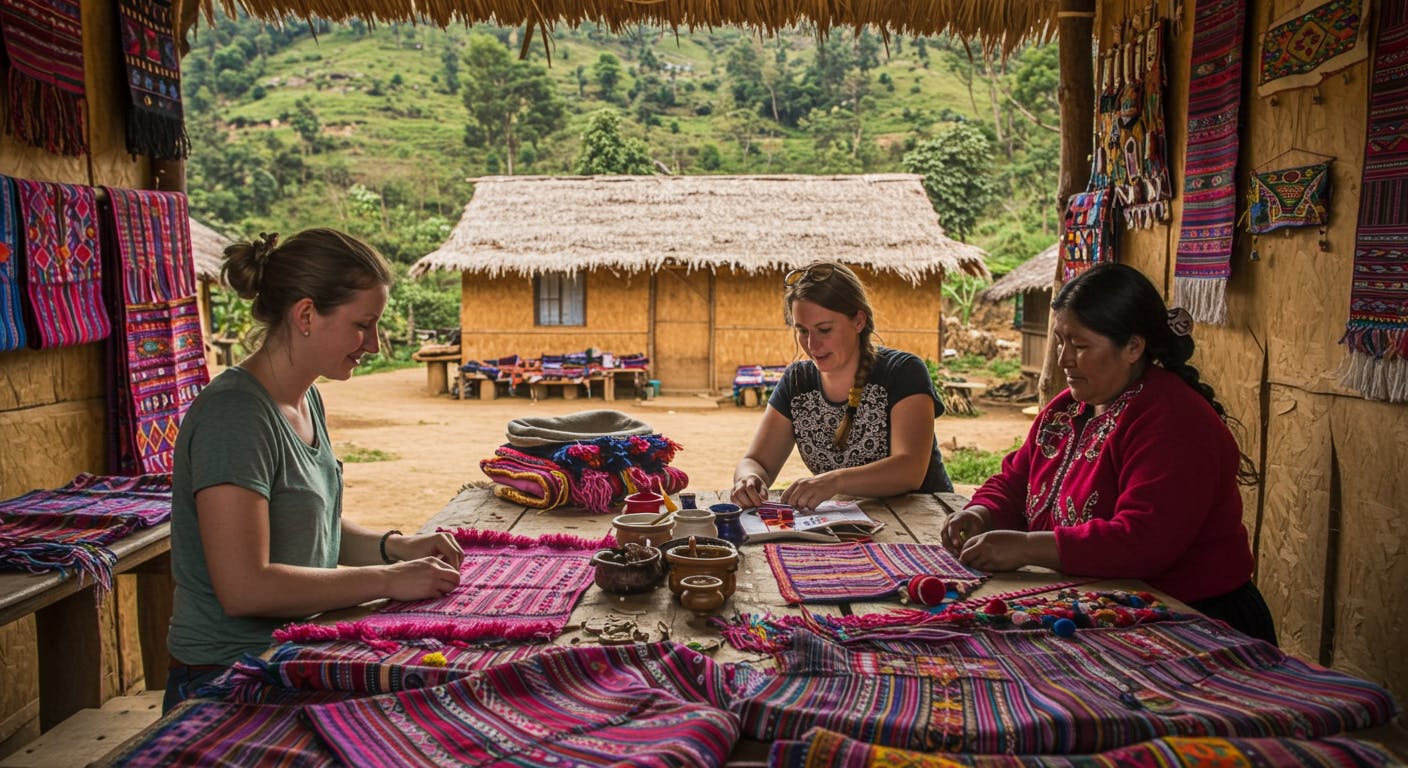
Slow travel and local communities
Local economies thrive when visitors engage meaningfully with communities. Studies show that 68% of travellers prefer locally guided tours over packaged experiences, fostering lasting value beyond just temporary visits.
Spending patterns reveal striking differences in economic impact. For every $100 spent at local businesses, $68 remains within the community, while chain operations only recirculate $43. Vermont’s dairy farms offer a clear example of this, where agritourism initiatives have led to:
- 12% annual revenue growth for participating farms
- 23 new full-time jobs per county
- The preservation of 150 heritage farming techniques
Artisan workshops also play a crucial role in preserving traditional crafts. In Oaxaca, Mexico, textile cooperatives pass on ancient weaving methods to younger generations. Visitors can engage by:
- Participating in three-day natural dye workshops
- Collaborating on design projects
- Making direct purchases from master weavers
Certified homestay networks ensure fair economic distribution. Recommended platforms include:
- Fairbnb (70% of host revenue is shared with local projects)
- Homestay.com (community benefit certification)
- Workaway (skill-exchange model)
Language apps, such as Duolingo and Memrise, help bridge communication gaps. After 30 days of immersion, the percentage of users reporting basic fluency rises from 12% to 41%, enabling deeper connections with local cultures worldwide.
Overcoming challenges of slow travel
Adopting a more relaxed pace of exploration comes with its challenges, but these can be addressed with smart solutions. From managing time to handling unexpected costs, proper planning is essential. For instance, RV storage facilities can reduce pre-trip preparation time by 30%, according to RecNation.
Time management strategies
Remote workers can adopt techniques from the 4-Hour Workweek. Tools like Toggl help track productivity, while apps such as Focus@Will minimise distractions. Block scheduling ensures that work and exploration coexist smoothly.
Annual leave tactics: Teachers often use the summer holidays for extended trips, while corporate employees may stack holidays for longer breaks.
Gear rentals: Outdoorsy.com offers RVs at 60% less than the cost of ownership.
Visa planning: Schengen Area rules permit stays of 90 days in 180 days, so splitting stays across different regions can extend your time abroad.
Budget and logistics
When planning trips, compare the cost of renting versus buying equipment. For example, renting an RV for $200 per month may be more cost-effective than buying one for $50,000. Packing lists should focus on versatility to save both space and weight.
Weather apps like AccuWeather provide real-time alerts, and booking flexible accommodations with free cancellation policies helps counter unexpected changes. Multi-purpose gear, such as solar-powered chargers, can save space and weight while offering practical utility.
Adjusting your pace to local rhythms can significantly reduce stress. Embrace spontaneity while still keeping the essentials organised—this approach ensures that challenges become part of the adventure.
Slow travel success stories
Real-world examples demonstrate the effectiveness of mindful exploration. Members of Flight-Free UK reduced their personal emissions by 83% by opting for alternative transport methods. These cases show how intentional travel choices can lead to meaningful change.
Byway Travel reports 94% satisfaction with its flight-free packages, with its hotel partners noting that stays average 30% longer than the industry norm.
Thru-hikers on the Appalachian Trail complete 6-month journeys with minimal supply runs, and strategic food drops, coupled with lightweight gear, reduce logistical footprints by 40%.
A digital nomad’s expense report reveals $18,000 in savings over three years, as slow travel reduces accommodation costs through work-exchange programs.
REI’s adventure packages now feature 14+ day itineraries, with participants showing 22% higher retention rates compared to traditional tours.
The National Park Service’s "Slow Season" initiative has increased off-peak visitation by 17%, reducing crowding and improving trail conditions in places like Yosemite and Yellowstone.
As these models gain traction, the tourism industry is adapting. From thru-hikers to remote workers, travellers are proving that depth is far more rewarding than speed. Their journeys are redefining what meaningful travel can truly achieve.
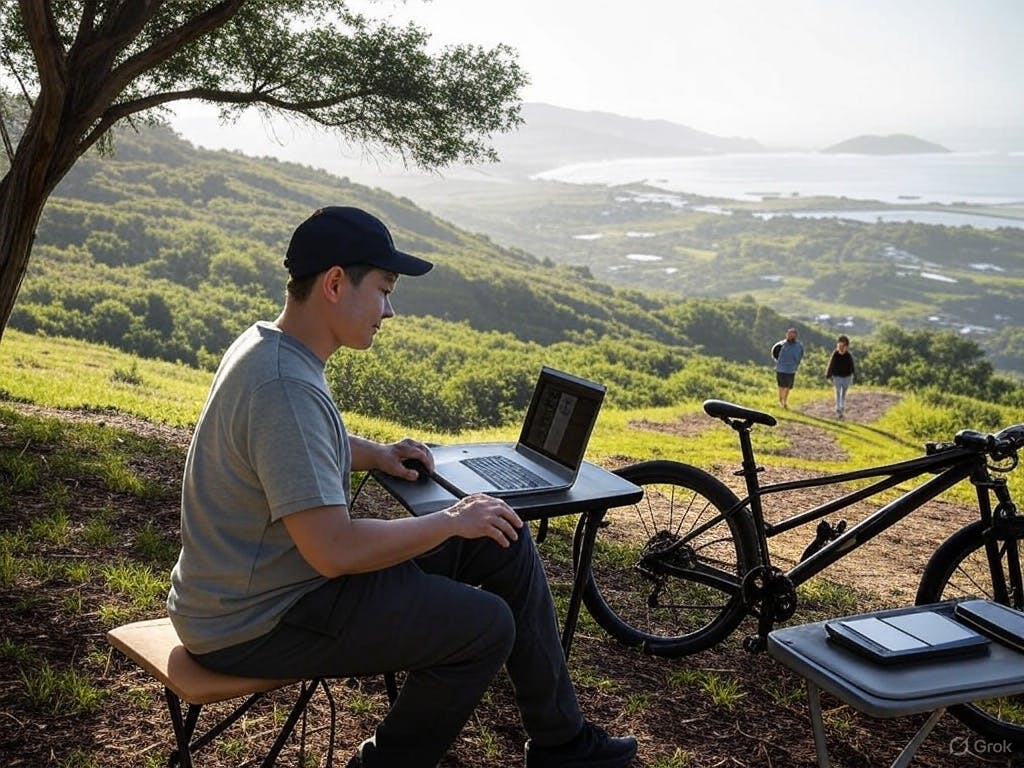
Start your slow travel journey today
Sign-ups for Flight-Free USA have tripled since 2020, demonstrating that change is possible. A smaller environmental footprint starts with simple actions. Begin by exploring nearby towns by train or bike before venturing on regional routes.
Pack smart: reusable water filters and convertible backpacks help reduce waste. Tools such as Cooler Future allow you to track your carbon impact. Patagonia’s 60-day sabbaticals are a prime example of how businesses are embracing sustainable practices.
See the world from a different perspective. Longer stays deepen connections with destinations and significantly lower emissions. In this way, every trip not only enriches your life but also helps preserve the planet.
17 South Street
Auckland 1010
New Zealand
info@carbonclick.com- -
- X
Subscribe now to stay up to date with CarbonClick, carbon offsetting and climate action.
By signing up you agree to our Privacy Policy.

